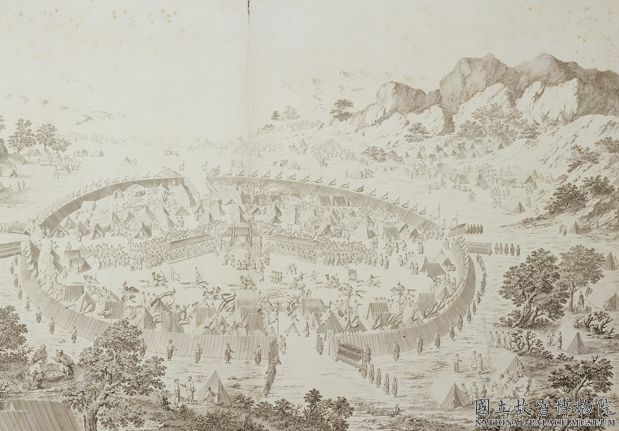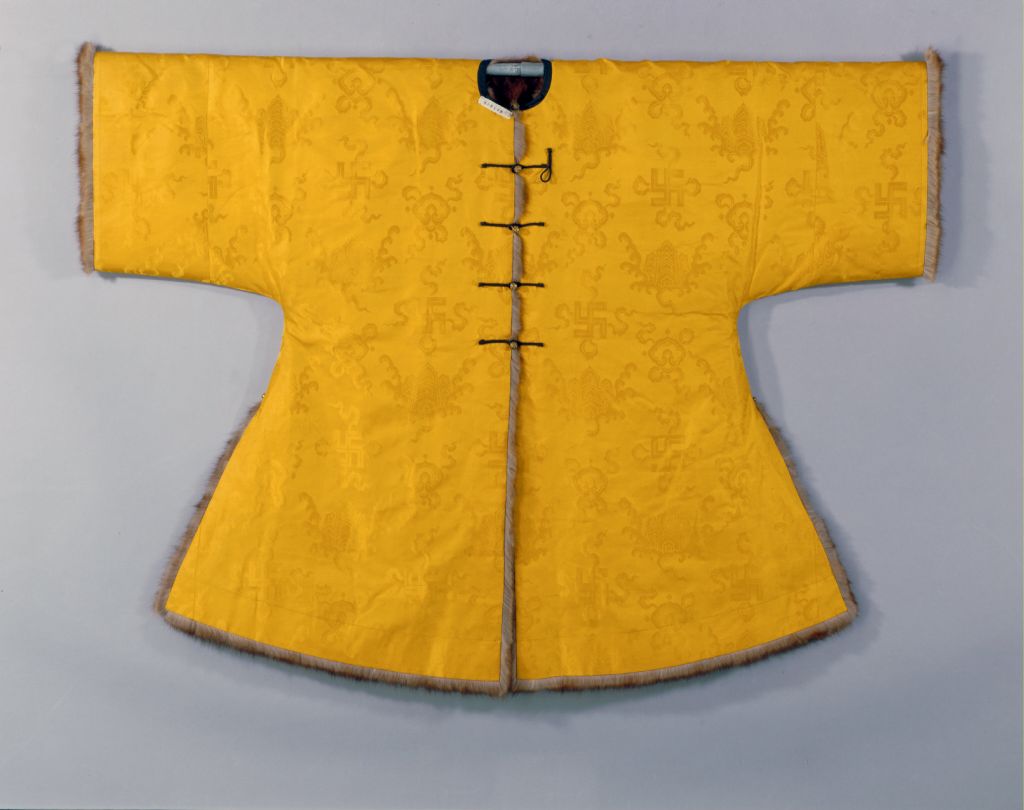[Light lake color bamboo and stone tapestry with a one-line front and shoulders]
Light lake color bamboo and stone tapestry with a one-line front and shoulders, with a clear Guangxu, a body length of 71cm, a shoulder width of 42cm, and a hem width of 93cm. The old collection of the Qing Palace
In the Qing Dynasty, the camisole, also known as vest, tight fitting vest, or vest, was a sleeveless tight fitting garment. According to the length of the garment, the camisole can be divided into two types: the large camisole and the small camisole. The large camisole is longer than the knee, while the small camisole is longer than the waist. According to the style of the lapel, the small waistband can be divided into a large lapel, a pair of lapels, a pipa lapel, and a slotted lapel. The “one line” front waistband is named for its “one line” shape with the front opening horizontally across the chest. It consists of two pieces on the chest and back, with seven buttons nailed to the front and three buttons nailed to each of the left and right armpits, making a total of 13. It is also known as the “Thirteen Tai Bao”. It was originally worn by military generals in the Qing Dynasty when riding and shooting, so it is also known as “Baturu Kam Shoulder”. “Baturu” means warrior in Manchu. “A one-breasted waistcoat is usually worn outside the robe. If worn inside the robe, if you feel hot, you just need to reach inside and unfasten the horizontal and vertical rows of buttons to pull it off, avoiding the need to take off your coat. Wearing it is very convenient.”. In the late Qing Dynasty, the one-character lapel and shoulder jacket were widely popular in the capital, making them easy for both men and women to wear
This camisole is a straight front camisole and is a stand-up collar, sleeveless, straight front jacket. With white Shoushan bamboo tapestry as the surface, lotus pigment spun silk as the lining, inlaid with black Wanzi Qu water texture woven gold satin edge. The two pieces of the chest and back are connected by 13 buttons, with a copper plated flower carving button 1 and a white jade button 6 nailed to the one-line flap, and a white jade button 3 nailed to each of the two armpits. This waistcoat is made of white jade as a buckle, and is made of luxurious materials. The tapestry process is exquisite, with elegant patterns and exquisite production. It is a casual dress worn by the late Qing Dynasty empresses in the spring and autumn seasons, reflecting the prevailing fashion of the late Qing Dynasty.
![图片[1]-Light lake color bamboo stone pattern tapestry one line lapel waistband-China Archive](https://chinaarchive.net/Warring States period/tapestry and embroidery/18053[1024].jpg)
![浅湖色竹石纹缂丝一字襟坎肩背面 图片[2]-Light lake color bamboo stone pattern tapestry one line lapel waistband-China Archive](https://chinaarchive.net/Warring States period/tapestry and embroidery/18054[1024].jpg) 浅湖色竹石纹缂丝一字襟坎肩背面
浅湖色竹石纹缂丝一字襟坎肩背面

![[Qing Dynasty] British female painter—Elizabeth Keith, using woodblock prints to record China from the late Qing Dynasty to the early Republic of China—1915-China Archive](https://chinaarchive.net/wp-content/uploads/2022/11/image-191x300.png)



